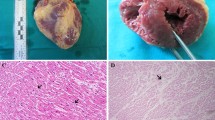Abstract
Background: Amphetamine exposure is associated with congenital cardiac abnormalities in animals. We previously reported an association between recreational use of 2,4-methylenedioxymethamphetamine (ecstasy, MDMA) and ventricular septal defect in babies born to users. We have carried out a case control study to investigate risks in the occurrence of ventricular septal defect in a cohort of babies born in the North East of England. Methods: Cases were identified from paediatric cardiology units in Newcastle upon Tyne and Leeds, and controls were recruited from the mothers of babies born in the same hospital as the index case. Research nurses carried out interviews using a structured questionnaire. Results: A total of 296 case control pairs were studied. There was insufficient exposure to ecstasy to test the primary hypothesis. Increased risk of ventricular septal defect was found to be associated with consumption of cough and cold remedies [pre-conception OR 2.2, 95% CI 1.41, 3.51; pregnancy OR 5.1, 95% CI 2.56, 11.27; exposure in either OR 2.83, 95% CI 1.85, 4.45; P<0.005] and in the case of non-steroidals for exposures in pregnancy (OR 4.2, 95% CI 1.54, 14.26; P<0.005). Conclusions: These findings suggest that ventricular septal defect is associated with consuming the medications identified. They are also compatible with the hypothesis that sympathomimetics (pseudoephedrine, phenylephrine and phenylpropanolamine) present in cough mixtures cause the increased risk, and with our original hypothesis that sympathomimetics and amphetamines are potentially cardiotoxic in utero.
Similar content being viewed by others
References
Schaefer C, Peters P (2001) Diuretics. Drugs during pregnancy and lactation: handbook of prescription drugs and comparative risk assessment. Elsevier, Amsterdam, pp 113–115
Shepard TH (2002) Annual commentary on human teratogens. Teratology 66:275–277
Rost van Tonningen, van Driel MM, Garbis Berkvens JM, Reuvers Lodewijks WB (1999) Zwangerschapsuitkomst na ecstacygebruik; 43 gevallen gevolgd door de Teratologie Informatie Service van het RIVM. Ned Tijdschr Geneeskd 143:27–31
Ho E, Karimi-Tabesh L, Koren G (2001) Characteristics of pregnant women who use Ecstasy (3,4-methylenedioxymethamphetamine). Neurotoxicol Teratol 23:561–567
McElhatton PR, Bateman DN, Evans C, Pughe KR, Thomas SHL (1999) Congenital anomalies after prenatal ecstasy exposure. Lancet 354:1441–1442
Little BB, Toosje T, VanBeveren TT, Gilstrap LC (1998) Amphetamine abuse during pregnancy, Chap 27. In: Gilstrap LC, Little BB (eds) Drugs and pregnancy, 2nd edn. Chapman and Hall, London
Schardein JL (2000) CNS stimulants and anorectic agents, Chap 8. In: Chemically induced birth defects, 3rd edn. Marcel Dekker, New York
Sands AJ, Casey FA, Craig BG, Dornan JC, Rogers J, Mulholland HC (1999) Incidence and risk factors for ventricular septal defect in ‘low risk’ neonates. Arch Dis Child Fetal Neonatal Ed 81:F61–F63
Loffredo CA (2000) Epidemiology of cardiovascular malformations: prevalence and risk factors. Am J Med Gen (Semin Med Genet) 97:319–325
Webb E, Ashton CH, Kelly P, Kamali F (1996) Alcohol and drug use in UK university students. Lancet 348:922–925
Christophersen AS (2000) Amphetamine designer drugs—an overview and epidemiology. Toxicol Lett Mar 15:127–131
St Omer VE, Ali SF, Holson RR, Duhart HM, Scalzo FM, Slikker W Jr (1990) Behavioural and neurochemical effects of prenatal methylenedioxymethamphetamine (MDMA) exposure in rats. Neurotoxicol Teratol 13:13–20
Ferencz C, Rubin JD, Loffredo CA, Magee CA (1993) Epidemiology of congenital heart disease: the Baltimore-Washington Infant Study, 1981–1989. Futura Publishing Co., Mt. Kisko
Boneva RS, Botto LD, Moore CA, Yang Q, Correa A, Erickson D (2001) Mortality associated with congenital heart defects in the United States: trends and racial disparities, 1979–1997. Circulation 103:2376–2381
Pradat P, Francannet C, Harris JA et al (2003) The epidemiology of cardiovascular defects, Part I: a study based on data from three large registries of congenital malformations. Pediatr Cardiol 24:195–221
Tikkanen J, Heinonen OP (1991) Risk factors for ventricular septal defect in Finland. Public Health 105:99–112
Chambers CD and Jones KL (2002) Is genotype important in predicting the fetal alcohol syndrome? J Pediatr 141:1751–1752
Day NL, Leech SL, Richardson GA et al (2002) Prenatal alcohol exposure predicts continued deficits in offspring size at 14 years of age. Alcohol Clin Exp Res 26:1584–1591
O’Callaghan FV, O’Callaghan M, Najman JM et al (2003) Maternal alcohol consumption during pregnancy and physical outcomes up to 5 years of age: a longitudinal study. Early Hum Dev 71:137–148
Testa M, Quigley BM, das Eiden R (2003) The effects of prenatal alcohol exposure on infant mental development: a meta-analytical review. Alcohol Alcohol 38:295–304
Källén K (2002) Maternal smoking and congenital malformations. Fetal Matern Med Rev 13:63–86
Källén K (1999) Maternal smoking and congenital heart defects. Eur J Epidemiol 15:731–737
Torfs CP, Katz EA, Bateson TF et al (1996) Maternal medications and environmental exposures as risk factors for gastroschisis. Teratology 54:84–92
Werler MM, Sheehan JE, Mitchell AA (2002) Maternal medication use and risks of gastroschisis and small intestinal atresia. Am J Epidemiol 155:26–31
Heinonen OP et al (1997) Birth defects and drugs in pregnancy. Publishing Sciences Group, Littleton, pp 345–356
Ericson A, Källén BAJ (2001) Nonsteroidal anti-inflammatory drugs in early pregnancy. Reprod Toxicol 15:371–375
Nielsen GL, Sørensen HT, Larsen H et al (2001) Risk of adverse birth outcome and miscarriage in pregnant users and non-steroidal anti-inflammatory drugs: population based observational study and case-control study. BMJ 322:266–270
Källén K, Otterblad Olausson P (2003) Maternal drug use in early pregnancy and infant cardiovascular defect. Reprod Toxicol 17:255–261
Wasserman CR, Shaw GM, O’Malley CD, Tolarova MM, Lammer EJ (1996) Parental cigarette smoking and risk factor for congenital anomalies of the heart, neural tube, or limb. Teratology 53:261–267
Acknowledgements
The British Heart Foundation supported this study, and we gratefully acknowledge their support (grant number BHF RES/0130/6595). We also acknowledge the hard work of our research nurses.
Author information
Authors and Affiliations
Corresponding author
Rights and permissions
About this article
Cite this article
Bateman, D.N., McElhatton, P.R., Dickinson, D. et al. A case control study to examine the pharmacological factors underlying ventricular septal defects in the North of England. Eur J Clin Pharmacol 60, 635–641 (2004). https://doi.org/10.1007/s00228-004-0829-x
Received:
Accepted:
Published:
Issue Date:
DOI: https://doi.org/10.1007/s00228-004-0829-x




